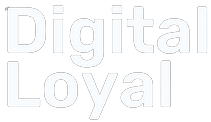Table of content
In the ever-evolving landscape of website design, Webflow stands out as a game-changer. But what exactly is Webflow, and why is it capturing the attention of designers and developers alike? This comprehensive guide will answer these questions and more, providing you with everything you need to know about this innovative platform.
What is Webflow? An Overview
Webflow is a powerful web design tool that combines the flexibility of traditional code with a user-friendly visual interface. It allows users to design, build, and launch responsive websites without needing to write extensive code. Essentially, Webflow bridges the gap between design and development, making it accessible for both designers and developers.
Key Features of Webflow
- Visual Design Interface: Webflow’s drag-and-drop interface allows users to design websites visually, similar to how you would in tools like Adobe XD or Sketch. This means you can see changes in real-time as you make adjustments, streamlining the design process.
- Responsive Design: One of Webflow’s standout features is its ability to create fully responsive websites. Users can design for various screen sizes and devices, ensuring a seamless experience across desktops, tablets, and smartphones.
- CMS Capabilities: Webflow includes a content management system (CMS) that allows users to create and manage dynamic content. This is particularly useful for blogs, portfolios, and other content-heavy sites.
- Hosting and Publishing: Webflow offers built-in hosting with fast load times and reliable performance. Users can publish their sites directly from the platform, eliminating the need for third-party hosting services.
- Interactions and Animations: With Webflow, you can add complex interactions and animations to your site without coding. This feature enables you to create engaging user experiences and dynamic content presentations.
How Much Does It Cost to Have a Webflow Website?
Understanding the cost of using Webflow is crucial for planning your web design projects. Webflow offers various pricing plans to cater to different needs:
- Free Plan: Ideal for testing and personal projects, the free plan allows users to design and build websites, but publishing is restricted to Webflow’s subdomain.
- Basic Plan: Starting at $12 per month, this plan is suited for simple websites that do not require CMS capabilities. It includes custom domain support and removes Webflow branding.
- CMS Plan: At $16 per month, the CMS plan offers more advanced features like content management and additional CMS collections. It’s suitable for blogs and content-driven sites.
- Business Plan: For $36 per month, the Business plan includes enhanced hosting features, priority support, and more CMS collections. This plan is ideal for larger sites with high traffic.
- Enterprise Plan: Custom pricing is available for enterprise-level needs, providing advanced features, enhanced security, and dedicated support.
Additional Costs
- Domain Registration: While Webflow provides hosting, you’ll need to purchase and register a domain separately if you want a custom domain.
- Templates and Plugins: Premium templates and third-party integrations may incur additional costs.
How Does Webflow Compare to Shopify? WordPress? Wix? Squarespace?
When choosing a web design platform, it’s essential to understand how Webflow stacks up against other popular options like Shopify, WordPress, Wix, and Squarespace.
Webflow vs. Shopify
Shopify is a leading e-commerce platform focused on online store creation, whereas Webflow is a versatile web design tool with strong CMS and design capabilities.
- E-Commerce Features: Shopify excels in e-commerce functionality, offering extensive tools for managing products, payments, and shipping. Webflow also supports e-commerce but is more flexible in design and customization.
- Design Flexibility: Webflow provides greater design freedom with its visual editor, while Shopify’s design options are more template-based and less flexible.
Webflow vs. WordPress
WordPress is a widely-used content management system known for its flexibility and extensive plugin ecosystem, while Webflow combines design and development in one platform.
- Ease of Use: Webflow’s visual interface simplifies design and development, whereas WordPress often requires additional plugins and custom code for similar functionality.
- Customizability: WordPress offers vast customization options through themes and plugins, but Webflow’s design capabilities are more integrated and streamlined.
Webflow vs. Wix
Wix is known for its user-friendly drag-and-drop interface, while Webflow offers a more sophisticated design and development environment.
- Design Flexibility: Webflow provides more advanced design options and code control compared to Wix’s more simplified design tools.
- Performance: Webflow’s hosting is optimized for speed and performance, whereas Wix users sometimes experience slower load times.
Webflow vs. Squarespace
Squarespace is another popular website builder with a focus on beautiful templates and ease of use, while Webflow offers more advanced design and CMS capabilities.
- Template Quality: Squarespace is renowned for its high-quality templates, while Webflow allows for more customized and unique design experiences.
- CMS and Interactions: Webflow’s CMS and interactions features are more advanced, offering greater flexibility for dynamic content and animations.
Conclusion
So, what is Webflow? It’s an innovative tool that combines the best of visual design and code, making it an invaluable asset for designers and developers alike. Its user-friendly interface, powerful features, and integrated hosting make it a top choice for creating responsive and dynamic websites.
As you consider Webflow for your web design needs, exploring its compatibility with various hosting services can be beneficial. For a deep dive into using Webflow with Hostinger, check out our article Does Hostinger Work with Webflow?.
If you’re ready to explore Webflow further, check out their official website and see how it can transform your web design projects.


